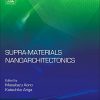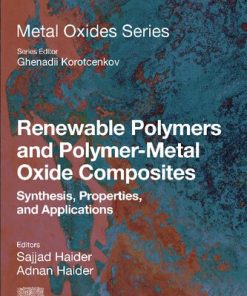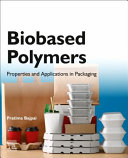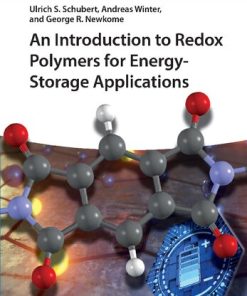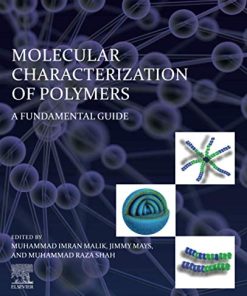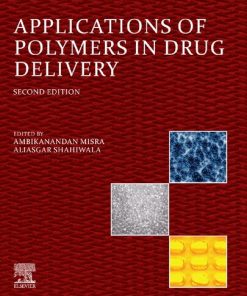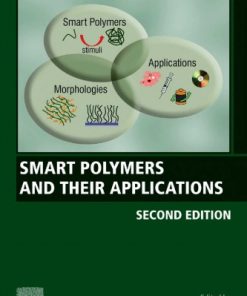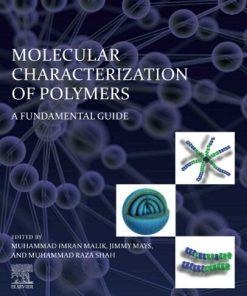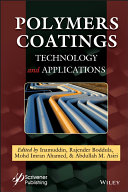(EBook PDF) Reactive polymers fundamentals and applications a concise guide to industrial polymers 3rd Edition Johannes Karl Fink 0128145102 9780128145104 full chapters
$50.00 Original price was: $50.00.$25.00Current price is: $25.00.
Reactive polymers fundamentals and applications : a concise guide to industrial polymers 3rd Edition Johannes Karl Fink – Ebook PDF Instant Download/DeliveryISBN: 0128145102, 9780128145104
Full download Reactive polymers fundamentals and applications : a concise guide to industrial polymers 3rd Edition after payment.
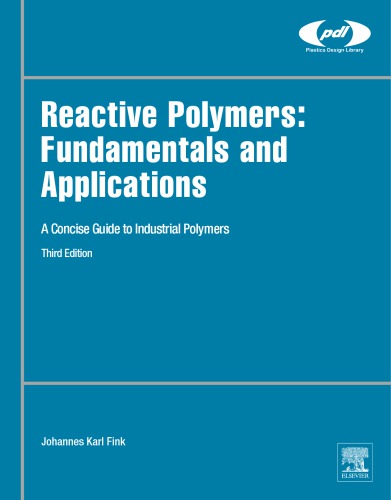
Product details:
ISBN-10 : 0128145102
ISBN-13 : 9780128145104
Author: Johannes Karl Fink
Reactive Polymers: Fundamentals and Applications: A Concise Guide to Industrial Polymers, Third Edition introduces engineers and scientists to a range of reactive polymers and then details their applications and performance benefits. Basic principles and industrial processes are described for each class of reactive resin (thermoset), as well as additives, the curing process, applications and uses. The initial chapters are devoted to individual resin types (e.g., epoxides, cyanacrylates), followed by more general chapters on topics such as reactive extrusion and dental applications. Injection molding of reactive polymers, radiation curing, thermosetting elastomers, and reactive extrusion equipment are covered as well.
Reactive polymers fundamentals and applications : a concise guide to industrial polymers 3rd Table of contents:
1: Unsaturated Polyester Resins
Abstract
1.1. History
1.2. Monomers
1.3. Special Additives
1.4. Curing
1.5. Properties
1.6. Applications and Uses
1.7. Special Formulations
References
2: Poly(urethane)s
Abstract
2.1. History
2.2. Monomers
2.3. Special Additives
2.4. Curing
2.5. Properties
2.6. Applications and Uses
2.7. Special Formulations
References
3: Epoxy Resins
Abstract
3.1. History
3.2. Monomers
3.3. Special Additives
3.4. Curing
3.5. Properties
3.6. Applications and Uses
3.7. Special Formulations
References
4: Phenol/Formaldehyde Resins
Abstract
4.1. History
4.2. Monomers
4.3. Special Additives
4.4. Curing
4.5. Properties
4.6. Applications and Uses
4.7. Special Formulations
4.8. Testing Methods
References
5: Urea/Formaldehyde Resins
Abstract
5.1. History
5.2. Synthesis of Resin
5.3. Special Additives
5.4. Curing
5.5. Measurement of Curing
5.6. Properties
5.7. Applications and Uses
5.8. Special Formulations
References
6: Melamine Resins
Abstract
6.1. History
6.2. Monomers
6.3. Special Additives
6.4. Properties
6.5. Applications and Uses
6.6. Special Formulations
References
7: Furan Resins
Abstract
7.1. History
7.2. Monomers
7.3. Special Additives
7.4. Curing
7.5. Properties
7.6. Applications and Uses
References
8: Silicones
Abstract
8.1. History
8.2. Monomers
8.3. Modified Types
8.4. Curing
8.5. Crosslinking
8.6. Properties
8.7. Applications and Uses
8.8. Special Formulations
References
9: Acrylic Resins
Abstract
9.1. History
9.2. Monomers
9.3. Special Additives
9.4. Curing
9.5. Properties
9.6. Applications and Uses
9.7. Special Formulations
References
10: Cyanate Ester Resins
Abstract
10.1. History
10.2. Monomers
10.3. Special Additives
10.4. Curing
10.5. Properties
10.6. Applications and Uses
10.7. Special Formulations
References
11: Bismaleimide Resins
Abstract
11.1. Monomers
11.2. Special Additives
11.3. Curing
11.4. Properties
11.5. Applications and Uses
11.6. Special Formulations
References
12: Terpene Resins
Abstract
12.1. History
12.2. Monomers
12.3. Curing
12.4. Properties
12.5. Applications and Uses
12.6. Special Formulations
References
13: Cyanoacrylates
Abstract
13.1. Monomers
13.2. Special Additives
13.3. Curing
13.4. Properties
13.5. Applications and Uses
References
14: Benzocyclobutene Resins
Abstract
14.0.0.1. Acid Functional Benzocyclobutenes
14.0.0.2. Fluorene-Based Monomers
14.0.0.3. Perylene-Based Monomers
14.0.0.4. Curing
14.1. Modified Polymers
14.2. Crosslinkers
14.3. Properties
14.4. Applications and Uses
References
15: Reactive Extrusion
Abstract
15.1. Extruder
15.2. Compositions of Industrial Polymers
15.3. Biodegradable Compositions
15.4. Chain Extenders
15.5. Related Applications
References
16: Compatibilization
Abstract
16.1. Equipment
16.2. Basic Terms
16.3. Interpenetrating Polymer Networks
16.4. Compatibilization by Additives
16.5. Reactive Compatibilization
16.6. Starch Polyester Blends
16.7. Functionalization of End Groups
References
17: Rheology Control
Abstract
17.1. Melt Flow Rate
17.2. Rheology Control Techniques
17.3. Peroxides for Rheology Control
17.4. Scavengers
17.5. Mechanism of Degradation
17.6. High Melt Flow Poly(propylene)
17.7. Irregular Flow Improvement
17.8. Heterophasic Copolymers
17.9. Poly(ethylene) from Waste Streams
17.10. Poly(propylene)
17.11. Poly(styrene)
References
18: Grafting
Abstract
18.1. The Techniques in Grafting
18.2. Polyolefins
18.3. Other Polymers
18.4. Terminal Functionalization
18.5. Grafting onto Surfaces
18.6. Special Applications
References
19: Acrylic Dental Fillers
Abstract
19.1. History
19.2. Methods for Development
19.3. Polymeric Composite Filling Materials
19.4. Monomers
19.5. Radical Polymerization
19.6. Inhibitors
19.7. Additives
19.8. Properties
19.9. Applications
References
20: Toners
Abstract
20.1. Toner Components
20.2. Toner Resins
20.3. Manufacture of Toner Resins
20.4. Characterization of Toners
People also search for Reactive polymers fundamentals and applications : a concise guide to industrial polymers 3rd:
reactive polymers fundamentals and applications pdf
what are the applications of polymers
application of polymers in automotive industry
reactive polymer
what is functional polymer
Tags:
Reactive polymers,fundamentals,applications,concise guide,industrial polymers
You may also like…
Engineering
Renewable Polymers and Polymer-Metal Oxide Composites: Synthesis, Properties, and Applications
Chemistry - Analytical Chemistry
Engineering
Smart Polymers and Their Applications 2nd Edition by Aguilar Maria Rosa 0081024171 9780081024171



